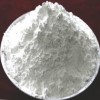Directly Compressible Calcium Carbonate and Calcium Carbonate Manufacturer Exporter IP BP Ph Eur USP FCC Food AR ACS Grade Manufacturer Exporter
Crystal Clear Products is a manufacturer exporter company manufacturing several chemicals including Directly Compressible Calcium Carbonate and Calcium Carbonate and IP BP Ph Eur USP NF JP ACS AR Analytical Reagent FCC Food Grade, Pharmaceutical Chemicals at best prices. The group has offices and factories in India USA and UAE and toll manufacturers in China and sells to almost every country in the world.
The manufacturing facilities of our partner manufacturers have one or more of FDA-cGMP-GLP certification, ISO-9001 certification, Halal and/or Kosher certification, REACH pre-registration ISO-22000 HACCP. We also allow third party inspection of products offered. We can offer small quantities from laboratory and trial packs to large shipments of container loads of material.
Hazard Statements:
Not a hazardous substance or mixture according to Regulation (EC) No. 1272/2008.
This substance is not classified as dangerous according to Directive 67/548/EEC.
Not considered hazardous by the OSHA Hazard Communication Standard (29 CFR 1910.1200)
Signal Word: None
Transport Information
DOT USA, TDG Canada & ADR/RID Europe: Not dangerous goods.
IMO/IMDG: Not dangerous goods.
IATA/ICAO: Not dangerous goods.
You may please visit:
Calcium Carbonate SDS of Manufacturers
Calcium Carbonate IP BP Ph Eur USP NF FCC Food AR ACS Reagenr Grade Manufacturers

CAS Number 471-34-1 Calcium Carbonate, EINECS: 207-439-9, Molecular Weight: 100.1, Chemical Formula: CaCO3
Calcium Carbonate USP
CaCO3 100.09
Carbonic acid, calcium salt (1:1)
Calcium Carbonate, dried at 200 for 4 hours, contains calcium equivalent to not less than 98.0 percent and not more than 100.5 percent of CaCO3.
Identification: The addition of acetic acid to it produces effervescence (presence of carbonate), and the resulting solution, after boiling, responds to the tests for Calcium.
Loss on drying: Dry it at 200 for 4 hours: it loses not more than 2.0% of its weight.
Acid-insoluble substances: Mix 5.0 g with 10 mL of water, and add hydrochloric acid, drop wise, with agitation, until it ceases to cause effervescence, then add water to make the mixture measure 200 mL, and filter. Wash the insoluble residue with water until the last washing shows no chloride, and ignite: the weight of the residue does not exceed 10 mg (0.2%).
Limit of fluoride: The limit is 0.005%.
Arsenic: The limit is 3 ppm.
Barium: A platinum wire, dipped in the filtrate obtained in the test for Acid-insoluble substances and held in a non-luminous flame, does not impart a green color.
Lead: the limit is 3 ppm.
Iron: To pass the test
Mercury: the limit is 0.5 µg per g.
Limit of magnesium and alkali salts: Mix 1.0 g with 35 mL of water, carefully add 3 mL of hydrochloric acid, heat the solution, and boil for 1 minute. Rapidly add 40 mL of oxalic acid TS, and stir vigorously until precipitation is well established. Add immediately to the warm mixture 2 drops of methyl red TS and then 6 N ammonium hydroxide, drop wise, until the mixture is just alkaline. Cool to room temperature, transfer to a 100-mL graduated cylinder, dilute with water to 100 mL, mix, and allow to stand for 4 hours or overnight. Filter, and to 50 mL of the clear filtrate in a platinum dish add 0.5 mL of sulfuric acid, and evaporate the mixture on a steam bath to a small volume. Carefully heat over a free flame to dryness, and continue heating to complete decomposition and volatilization of ammonium salts. Finally ignite the residue to constant weight.
The weight of the residue does not exceed 5 mg (1.0%).
Heavy metals: the limit is 0.002%.
Organic volatile impurities: meets the requirements.
Calcium Carbonate BP Specifications
CaCO3 -- 100
Action and use: Antacid.
DEFINITION
Content
98.5 per cent to 100.5 per cent (dried substance).
CHARACTERS
Appearance: White or almost white powder.
Solubility: Practically insoluble in water.
IDENTIFICATION
A. It gives the reaction of carbonates
B. 0.2 ml of solution S (see Tests) gives the reactions of calcium
TESTS
Solution S: Dissolve 5.0 g in 80 ml of dilute acetic acid R . When the effervescence ceases, boil for 2min. Allow to cool, dilute to 100 ml with dilute acetic acid R and filter, if necessary, through a sintered-glass filter.
Substances insoluble in acetic acid: Maximum 0.2 per cent.
Chlorides: Maximum 330 ppm.
Sulphates: Maximum 0.25 per cent.
Arsenic: Maximum 4 ppm, determined on 5 ml of solution S.
Barium: To 10 ml of solution S add 10 ml of calcium sulphate solution R . After at least 15 min, any opalescence in the solution is not more intense than that in a mixture of 10 ml of solution S and 10 ml of distilled water R.
Iron: Maximum 200 ppm.
Magnesium and alkali metals: Maximum 1.5 per cent.
Heavy metals: Maximum 20 ppm.
Calcium Carbonate FCC Food Grade as per US Food Chemical Codex
CaCO3 Formula weight 100.09
CAS 471-34-1
DESCRIPTION
Calcium Carbonate occurs as a fine, white or colorless, microcrystalline powder. It is stable in air, and it is practically insoluble in water and in alcohol. The presence of any ammonium salt or carbon dioxide increases its solubility in water, but the presence of any alkali hydroxide reduces the solubility.
Function: pH control agent; nutrient; dough conditioner; firming agent; yeast nutrient.
REQUIREMENTS
Identification: A sample dissolves, with effervescence, in 1 N acetic acid, in 2.7 N hydrochloric acid, and in 1.7 N nitric acid, and the resulting solutions, after boiling, give positive tests for Calcium.
Assay: Not less than 98.0% and not more than 100.5% of CaCO3 after drying.
Acid-Insoluble Substances: Not more than 0.2%.
Arsenic: Not more than 3 mg/kg.
Fluoride: Not more than 0.005%.
Lead: Not more than 3 mg/kg.
Loss on Drying: Not more than 2%.
Magnesium and Alkali Salts: Not more than 1%.
Calcium Carbonate Analytical Reagent Specifications
CaCO3
Formula Weight 100.09
CAS Number 471-34-1
REQUIREMENTS
Assay (dried basis): 99.0% CaCO3 min
MAXIMUM ALLOWABLE
Insoluble in dilute hydrochloric acid: 0.01%
Ammonium hydroxide precipitate: 0.01%
Chloride (Cl): 0.001%
Sulfate (SO4): 0.0015%
Ammonium (NH4): 0.003%
Barium (Ba): 0.01%
Heavy metals (as Pb): 0.001%
Iron (Fe): 0.003%
Magnesium (Mg): 0.02%
Potassium (K): 0.01%
Sodium (Na): 0.1%
Strontium (Sr): 0.1%
Directly Compressible Calcium Carbonate and Calcium Carbonate IP Grade is also offered.
Contact for Monograph, Uses, Matnfacturing Process, etc of Directly Compressible Calcium Carbonate and Calcium Carbonate and JP IP BP Ph Eur USP NF FCC Food AR ACS Reagent Grade Manufacturer Supplier Exporter
MANUFACTURER EXPORTER
MUMBAI 400009, INDIA. TEL: (OFFICE) 91-9322665100
info@manufacturerexporter.com
Copyright and Usual Disclaimer is Applicable
Last updated
11/19/2022
Manufacturer Suppliers Exporters at Wholesale Prices from India USA and around the Globe
Calcium Acetate -- Calcium Butyrate -- Calcium Borogluconate -- Calcium Chloride Fused Anhydrous Dihydrate Solution -- Calcium Chloride IP BP USP ACS AR Analytical Reagent FCC Food Grade -- Calcium Citrate -- Slaked Hydrated Lime Calcium Hydroxide BP USP IP ACS AR Analytical Reagent FCC Food Grade -- Calcium Lactate -- Calcium Lactate Gluconate -- Calcium lactobionate -- Calcium Bromo Lactobionate -- Calcium Glubionate -- D-Glucuronolactone -- D-Gluconolactone -- Calcium Malate -- Calcium Citrate Malate -- Calcium Magnesium Lactate Gluconate -- Calcium Pidolate -- Quick Lime Calcium Oxide USP IP FCC Food Grade Lumps Powder -- Calcium Propionate -- Calcium Saccharate -- Calcium Stearate -- Calcium Sulfate -- Calcium Undecylenate or Calcium Undecenoate --
Calcium Carbonate -- Calcium Disodium EDTA -- Calcium Gluconate -- Calcium Glycerophosphate -- Calcium Levulinate -- Calcium Polystyrene Sulfonate or Calcium Polystyrene Sulphonate -- Calcium Phosphate Monobasic or Monocalcium Phosphate -- Calcium Phosphate Dibasic or Dicalcium Phosphate -- Calcium Phosphate Tribasic or Tricalcium Phosphate --
Dihydroxyaluminum Sodium Carbonate -- Ammonium Bicarbonate -- Ammonium Carbonate -- Bismuth Subcarbonate -- Potassium Bicarbonate -- Potassium Carbonate -- Sodium Bicarbonate -- Sodium Carbonate -- Zinc Carbonate --






